
5 Tips to Prepare for the First Days of School
- Created:
14. 9. 2021 - Updated:
27. 9. 2023

Once again, this is the beginning of a new school season, and your little miracle begins attending kindergarten or school for the first time. This is an important, hard milestone for both you and your child. And we are here to make it easier for both of you.
What tips you’ll find in this article?
- How to prepare a child to enter kindergarten for the first time
- How to prepare a child to enter school for the first time
- Pocket money
- Give or not give the kid a smartphone
- Ideas for snack box
1. How to Prepare a Child Enter the Kindergarten for the First Time
Entering kindergarten is another stage of development for the child. The third year of a child’s life is considered to be the age when the child is mentally and socially developed, it is necessary to support this development by starting to attend a group of children of the same or similar age – a kindergarten. At the age of three, the child is also ready, according to experts, to break away from his parents and start new adventures with his peers. We have already written down for you 4 skills kids are expected to have when they start kindergarten, you’ll find all of them HERE.

2. How to Prepare a Child Enter the School for the First Time
Start the School Day Routine Before School
Children go to bed later and sleep in later over the summer holidays, but starting school can be tiring for a young child and not getting enough sleep can greatly affect how well your child feels, focuses, learns, and grows.
Establish a New Bed Time
Weeks ahead of time, start getting into the new routine so the night before school is a lot easier. Put the child to bed earlier each evening in preparation for school bedtime. During the school year, kids need to go to bed early in the evening so they get enough rest. Kids who are well rested perform better in school.
Get Organized and Prepared Early
In the weeks leading up to the first day of school, get everything together — not just school supplies. Make sure you have all the required medical forms, permission slips, etc. filled out before that big first day. The more organized you are, the calmer you’ll be, and the better your child will feel about the start of school.
Involved the Child
Help your child prepare. Get your child involved in the preparation process, too. It’s always fun to go out shopping for a few new notebooks or a special pencil case. Having the right lunchbox or knapsack can make a child feel excited about the start of the year.
Get Ready the Night Before
The night before school will be full of excitement, and it’s the perfect time to start getting ready for the big day. Lay out backpacks, clothes, homework, prepare together the lunchbox/knapsack and anything else needed in the morning to cut down on morning chaos. Once everything is set for the next day, focus on having a fun and relaxing evening. Make it a family night with a special dinner, a celebratory dessert, and some bonding time.
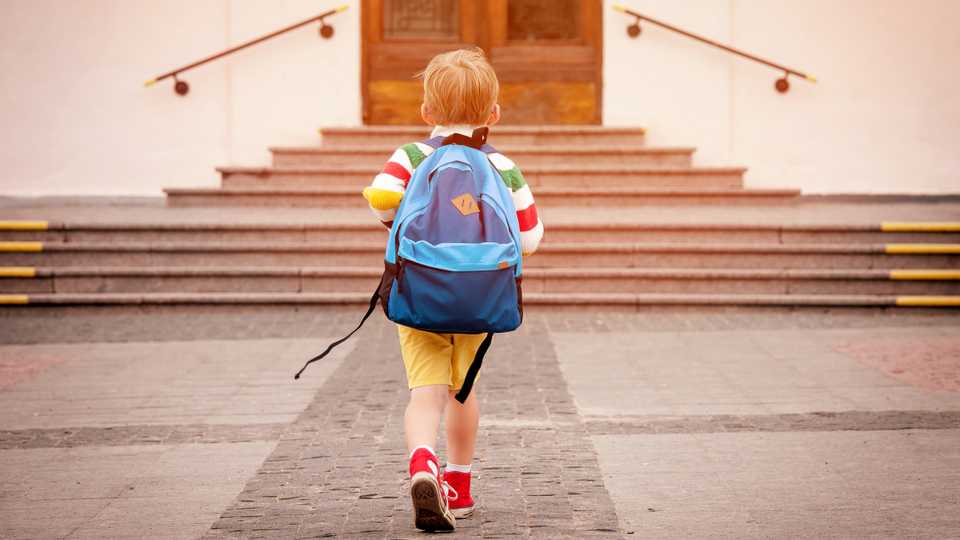
3. Pocket Money
Giving pocket money to children as young as four or five years helps them start learning about the value of money. For example, when children get pocket money, they have to make choices about spending or saving. And if they’re saving, they’ll learn about waiting for things they want.
When should a child get pocket money?
Many parents start giving their children a small allowance at around four or five years of age. Others wait until the child is nine or 10. Whenever you start, it’s important the child understands how much he or she is getting and how often that will be.
How much money should you give the child?
According to the key rule of setting pocket money is paying a dollar a year of a child’s age. Meaning your 6-year-old would get $6, while your 12-year-old would receive $12. But don’t forget to keep in mind that this pocket money should not include money for lunch or snacks. If you are not planning to prepare food to go to your child, then you should give your child separate money for food.
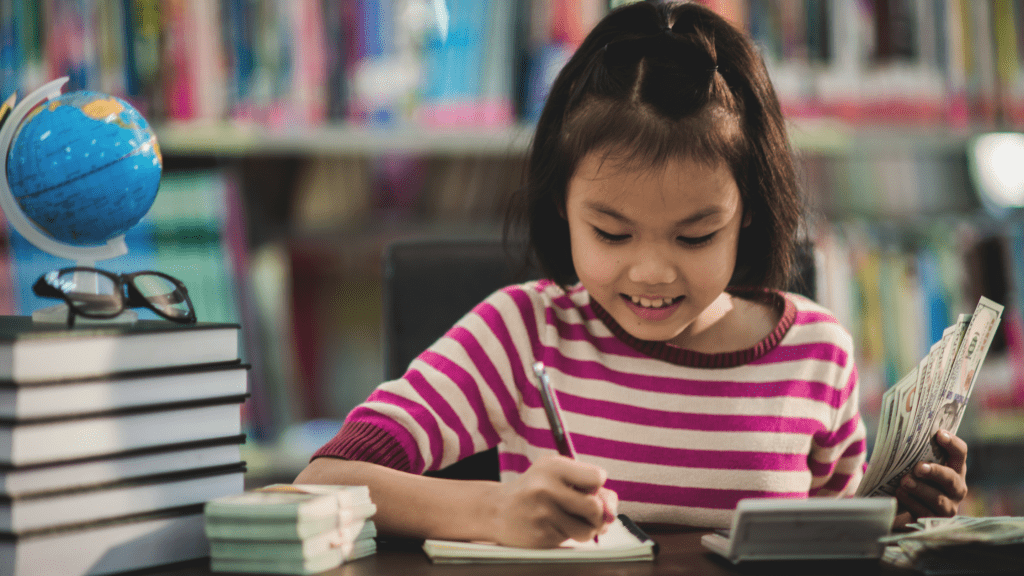
4. Give or Not Give Kid a Smartphone
When do you even allow your child to have technology? Or how to determine the right age for the use of modern technology by children?
It is perfectly normal and common for children around the age of 7 to attract smartphones, tablets, computers that offer a variety of games and entertainment. Besides that, children want to have what their friends have, and above all, what their parents have. It cannot be expected that the child’s desire for technology will pass, it is necessary to solve the problem. According to Anne Peymirat, a parental counselor, a child between the ages of 9 and 12 is mature to have own phone.
If you want to know more about technology and children – rule 3-6-9-12, how to set the rules for the use of technology or positive and negative effects of technology – check out our new series of articles on this topic.
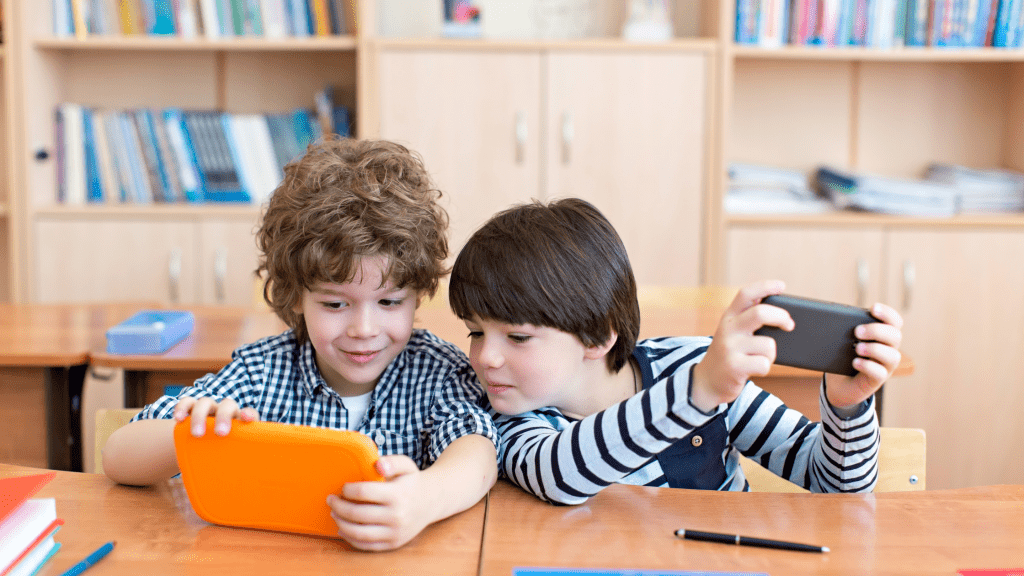
5. Ideas for Lunchbox
Packing school lunch is real work! We’ve compiled 10 ideas of every day packed lunchboxes to help give you some ideas and inspiration to pack great, healthy, yummy lunches for your kids.
What kind of lunchboxes you’ll find here: Real lunches packed for actual children that include fruits, veggies, whole grains, and protein.
Before we dive into the individual types of lunch boxes – do not forget to ask your child what he/she would like to have for lunch or let him/her make the lunchbox himself.
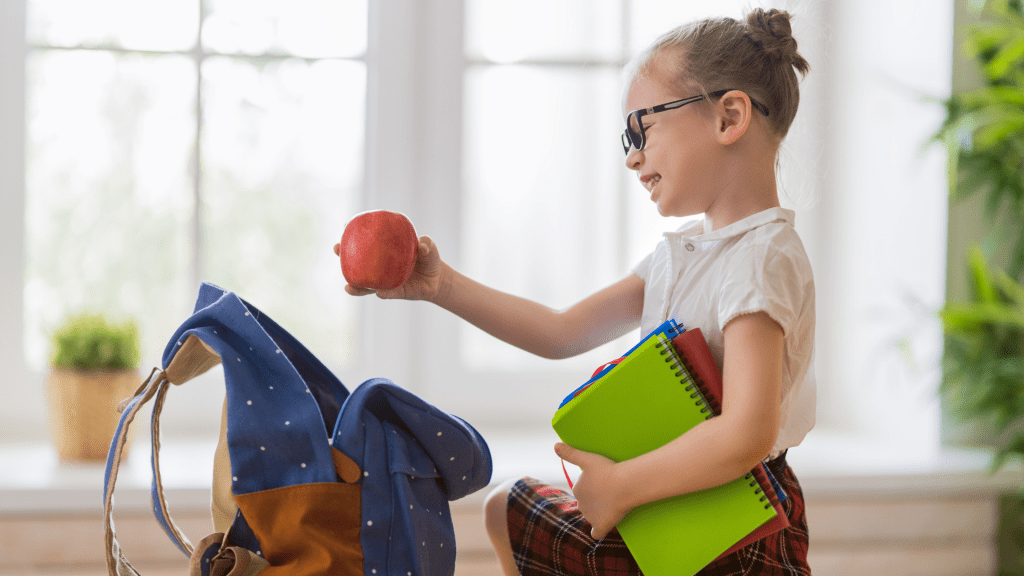
Option 1
- Turkey + Cheddar Roll-up
- Fresh Berries
- Yogurt
- Trail Mix
Option 2
- Hummus
- Pita Bread
- Grape Tomatoes
- Cucumbers
- Sliced Oranges
Option 3
- Cheese Quesadilla
- Guacamole
- Salsa
- Tortilla Chips
- Strawberries
Option 4
- Deli Meat + Cheese Kabobs
- Red Pepper Slices
- Apples
- Fruit Leather or Snacks
Option 5
- Hard Boiled Eggs
- Baby Carrots + Ranch
- Pretzels
- Peaches or Applesauce
Option 6
- Pasta Salad
- Yogurt
- Granola Bar
- Raspberries
Option 7
- Almond Butter + Jelly (or PB +J)
- String Cheese
- Fruit Cup
- Chips
Option 8
- Crackers
- Cheddar Cheese Cubes
- Grapes
- LaraBar or Cliff Bar
Option 9
- Bagel + Cream Cheese
- Yogurt Tube
- Baby Carrots
- Fruit Snacks
Option 10
- Veggie Wraps with Hummus
- Edamame or Snap Peas
- Clementine
- Granola Bar
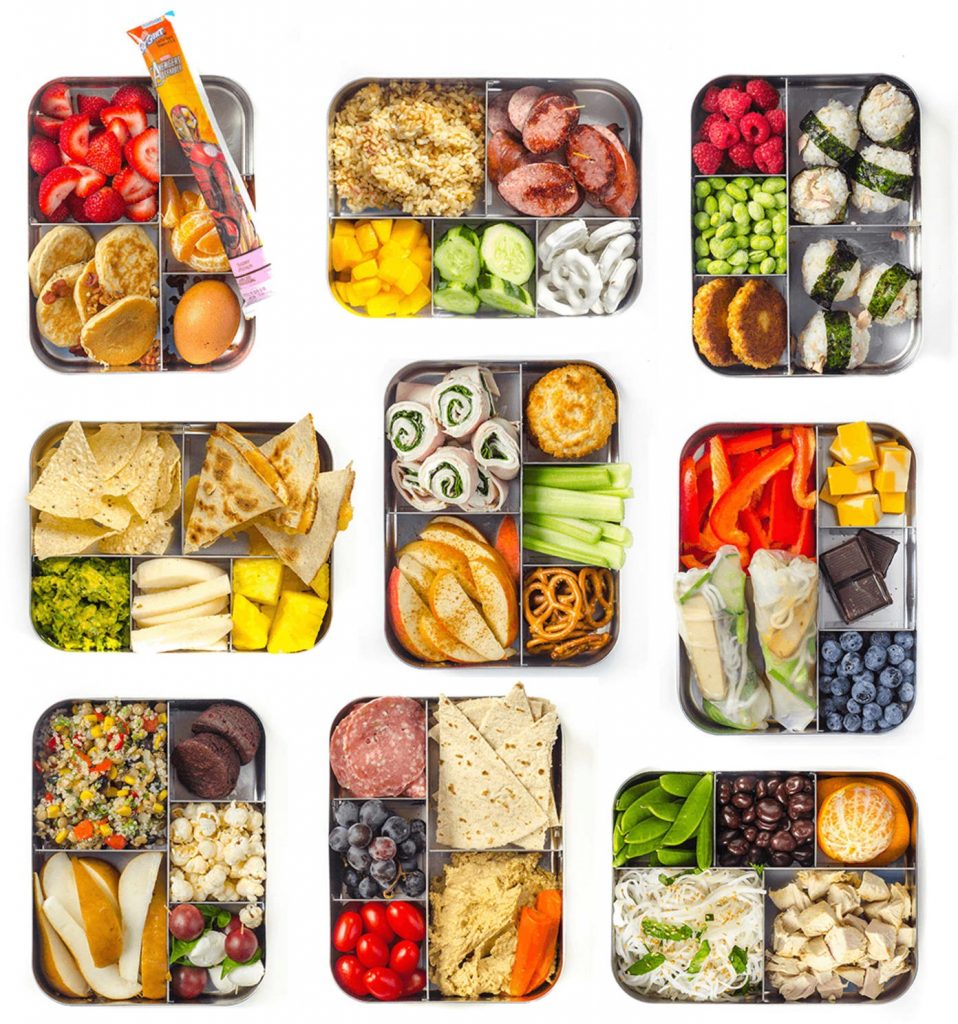
Main Meal:
- Pita Bread + Hummus
- Cheese + Crackers
- Turkey + Cheese Roll-ups
- Almond Butter + Jam Sandwich
- Cheese Quesadilla
- Hard Boiled Eggs
- Pasta Salad
- Meat + Cheese Kabob
- Chips + Guacamole
- Ham + Cheese Sandwich
- Bagel + Cream Cheese
- Veggie + Hummus Wrap
Fruits and Veggies:
- Oranges
- Apples
- Strawberries
- Grapes
- Peaches
- Blueberries
- Raspberries
- Natural Applesauce
- Mangoes
- Melon
- Baby Carrots
- Cucumbers
- Grape Tomatoes
- Edamame
- Snap Peas
Sides and Snacks:
- Chips
- Granola Bars
- Pretzels
- String Cheese
- Yogurt
- Trail Mix
- Lara Bar or Cliff Bar
- Fruit Leather
- Fruit Snacks
- Popcorn
- Crackers
- Chips + Salsa
- Fruit Cup
- Pudding Cup
- Graham Crackers
- Cookies
- Rice Krispies Treats
Drinks:
- Water Bottle
- 100% Juice Boxes
- Capri Suns
- Bolthouse Smoothies
- Milk — Strawberry or Chocolate
Source: Back to School Kids Lunch Ideas
You Might Also Be Interested In:
- Entering kindergarten – How to prepare a child
- 7 Tips How to Choose the Right Babysitter for Your Children
- How To Punish a Child – According To Age
- How To Handle the Child Tantrum
- Housework – Children and Tidying Up
- Kids and Partnership
- Examples Of Praise Words For Kids








